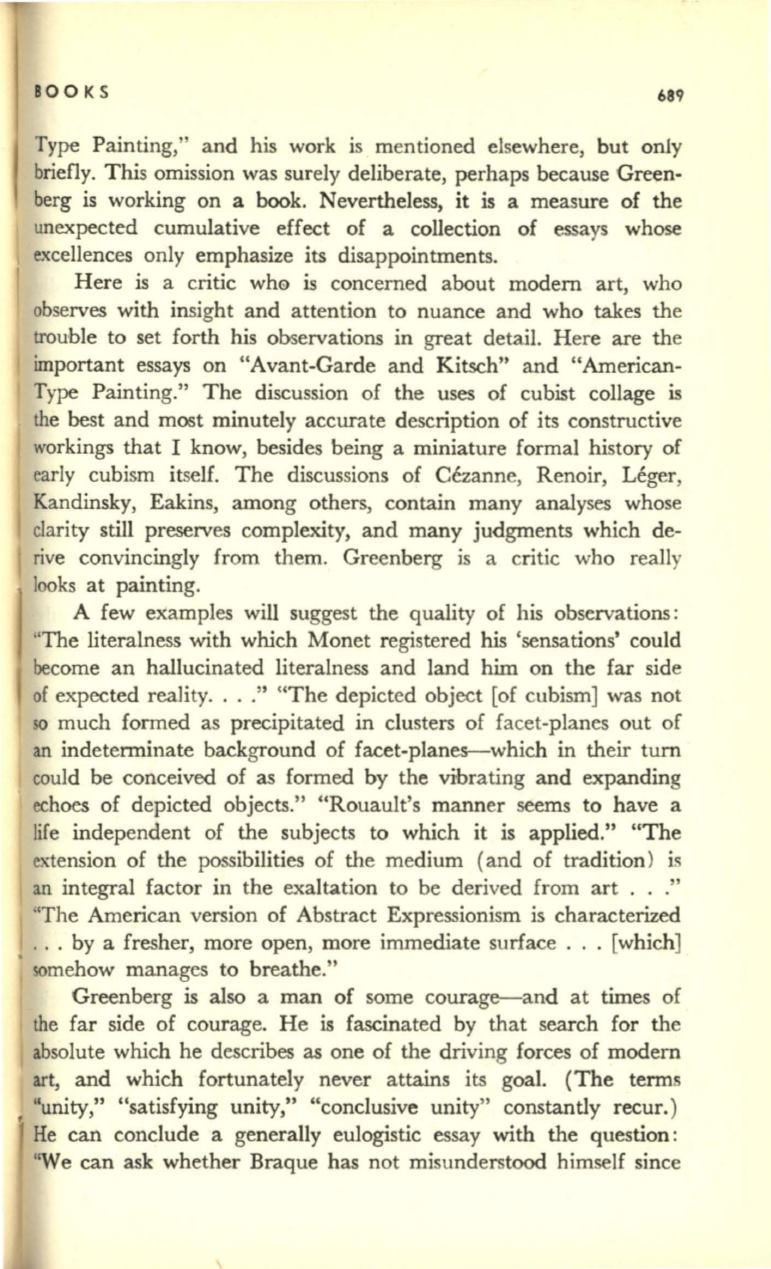
BOO KS
689
Type Painting," and his work is mentioned elsewhere, but only
briefly. This omission was surely deliberate, perhaps because Green–
berg is working on a book. Nevertheless, it is a measure of the
unexpected cumulative effect of a collection of essays whose
excellences only emphasize its disappointments.
Here is a critic whe is concerned about modern art, who
observes with insight and attention to nuance and who takes the
trouble to set forth his observations in great detail. Here are the
important essays on "Avant-Garde and Kitsch" and "American–
Type Painting." The discussion of the uses of cubist collage is
the best and most minutely accurate description of its constructive
workings that I know, besides being a miniature formal history of
early cubism itself. The discussions of Cezanne, Renoir, Leger,
Kandinsky, Eakins, among others, contain many analyses whose
clarity still preserves complexity, and many judgments which de–
rive convincingly from them. Greenberg is a critic who really
looks at painting.
A few examples will suggest the quality of his observations:
"The literalness with which Monet registered his 'sensations' could
become an hallucinated literalness and land him on the far side
of expected reality. ..." "The depicted object [of cubism]
was
not
so much formed as precipitated in clusters of facet-planes out of
an
indeterminate background of facet-planes--which in their turn
could be conceived of as formed by the vibrating and expanding
echoes of depicted objects." "Rouault's manner seems to have a
life independent of the subjects to which it is applied." "The
extension of the possibilities of the medium (and of tradition) is
an integral factor in the exaltation to be derived from art ..."
"The American version of Abstract Expressionism is characterized
. . . by a fresher, more open, more immediate surface ... [which]
somehow manages to breathe."
Greenberg is also a man of some courage-and at times of
the far side of courage. He is fascinated by that search for the
absolute which he describes as one of the driving forces of modern
art,
and which fortunately never attains its goal. (The terms
t
"unity," "satisfying unity," "conclusive unity" constantly recur.)
, He can conclude a generally eulogistic essay with the question :
"We can ask whether Braque has not misunderstood himself since


